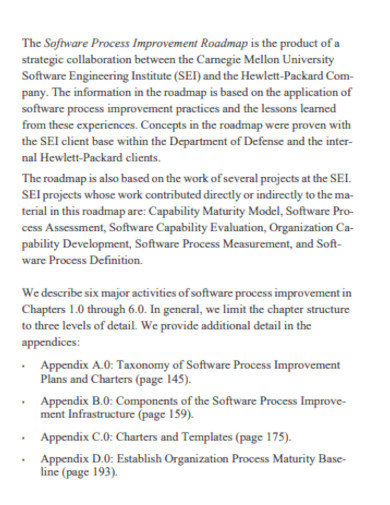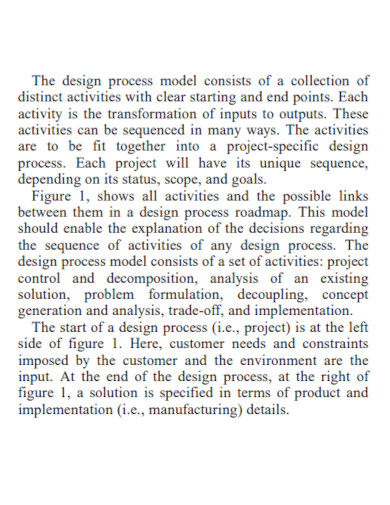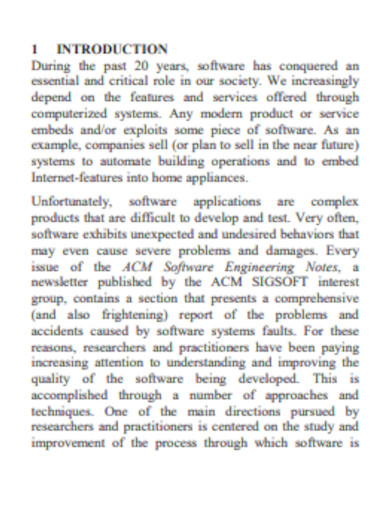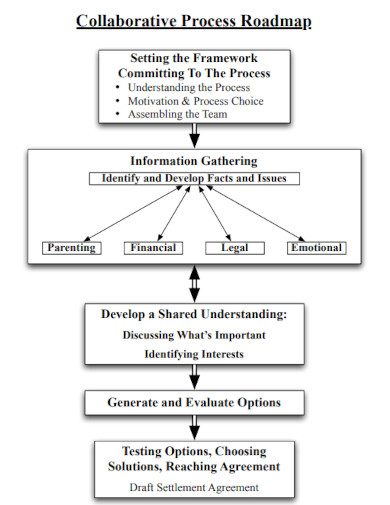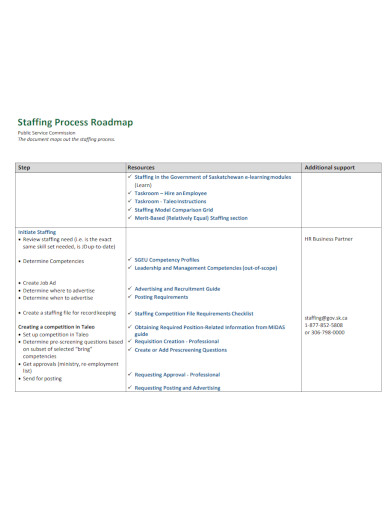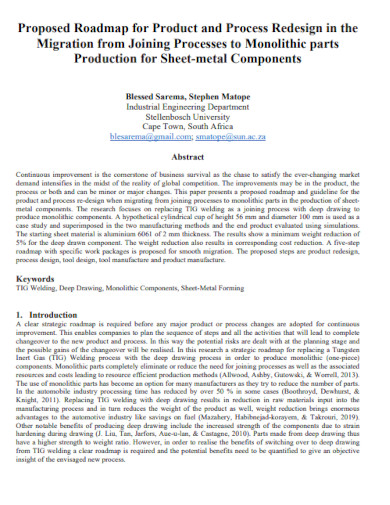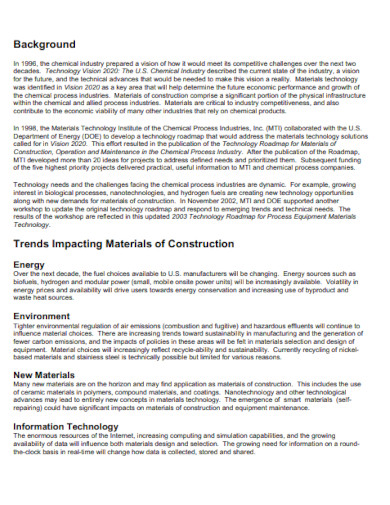A strategic plan is visualized using a roadmap. Perhaps you’re beginning a company, developing a new product, or overseeing a multi-functional project. You’ll need a bold vision for what you want to accomplish and a well-thought-out strategy for achieving your goals. The product of a strategic planning process is a roadmap. Given your resources and capacity, you can link goals to detailed activities and display the time period for achieving them. Roadmaps are also helpful for conveying strategies to stakeholders and keeping track of progress toward your goals.
10+ Process Roadmap Samples
The product development process has long been linked to roadmaps. However, roadmapping has grown beyond product management in recent years. It is now a widely used strategic planning method for many types of enterprises and teams. Most firms now employ several distinct types of roadmaps, including business, technology or IT, project, and advertising roadmaps.
1. Process Roadmap Template

2. Business Process Roadmap Template
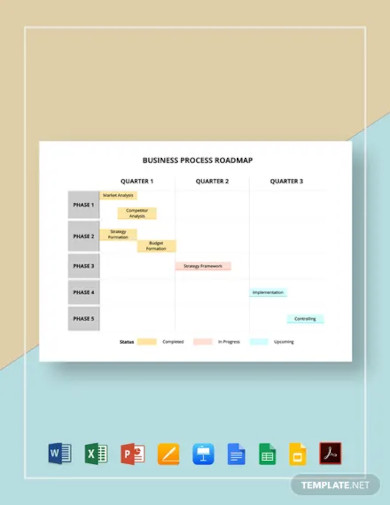
3. Sales Process Roadmap Template
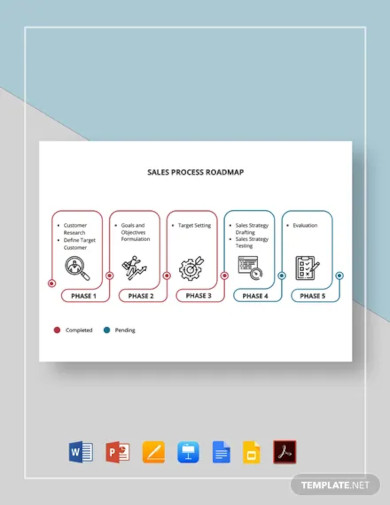
4. Software Process Roadmap
5. Design Process Roadmap
6. Standard Process Roadmap
7. Collaborative Process Roadmap
8. Staffing Process Roadmap
9. Product Process Roadmap
10. Roadmap for Process Equipment
11. Replacement Process Roadmap
Major Components of Process Roadmap
When you make a roadmap, you’re laying out a path from the vision of an effort through its realization. The process should start with a clear understanding and capacity to convey that vision.
If a corporation is developing a product, such vision could result in the most effective database application on the industry.
The roadmapping process can begin once the vision has been properly defined and agreed upon by all relevant parties. Research, strategy planning, and coordination with the organization will all be part of the process.
- Research – Learn about the product’s customers and consumers, as well as the difficulties they’re having that the product can solve; examine the market and the competitive environment; investigate the company’s resources and budget for this effort.
- Strategic planning – Determine the primary components (themes, epics, features, and so on) that will help people solve problems; establish a hierarchy of priorities. To get to a market-ready minimal viable product, rank all important components; creating a development strategy and allocating the necessary resources.
- Coordinating with the organization – Obtain executive stakeholders’ buy-in and support; collaborating with other teams to prepare everything you’ll need for your go-to-market strategy; sales, support, professional services, marketing, and other departments make up these groups.
Additional steps and actions may be included in your roadmapping approach. But it’s crucial to remember that this is a purposeful approach. That is, a method for identifying, organizing, and communicating all of the phases involved in getting from a product concept to a finished product.
A map is an excellent metaphor. For example, you may think of this strategic process as producing a map—a clear path to market for your product. It will help you keep on track throughout the procedure, even if you make multiple stops along the route. Every prospective feature on your product roadmap necessitates time and resources. Using a roadmap, on the other hand, will assist you in staying on track. You might consider whether greenlighting will propel your product forward, resulting in a successful market launch for each new item. As a result, it will be your most important criterion for deciding whether to say yes or no.
FAQs
What is roadmapping?
The act of generating a roadmap is known as roadmapping. This is a very efficient planning method because it allows you to visualize and express exactly what you want to do and when. Your roadmap can be shared with a range of people, including executives, teammates, other departments in your company, and customers. Anyone who has access to the roadmap can instantly grasp the plans and rally around what you’ll accomplish as a team.
What is the difference between a roadmap and a project plan?
A roadmap is a graphic representation of your strategic initiatives and significant work areas. A project plan is a supplementary document that spells out the specifics of what you’ll need to do to accomplish those goals. Create a roadmap to establish your high-level objectives and provide an overview of how you plan to achieve them. Then, to capture the step-by-step actions you’ll take to achieve each goal along the road, write a corresponding project plan.
Finally, if this procedure is followed correctly, a product manager will be able to create a plan. This plan lays out all of the necessary procedures in the most strategic order, as well as a list of the resources needed to bring a product’s vision to life.
Related Posts
FREE 10+ Career Roadmap Samples in Word | Google Docs | Google Sheets | Slides | Keynote | Excel | PowerPoint | Pages | PDF
FREE 10+ Employee Roadmap Samples in Word | Google Docs | Google Slides | Keynote | PowerPoint | Pages | PDF
FREE 10+ Startup Roadmap Samples in MS Word | MS Excel | PowerPoint | Apple Pages | Google Docs | Google Sheets | Slides | Keynote | PDF
FREE 10+ Quality Roadmap Samples in MS Word | MS Excel | PowerPoint | Apple Pages | Google Docs | Google Sheets | Slides | Keynote | PDF
FREE 10+ Timeline Roadmap Samples in MS Word | MS Excel | PowerPoint | Apple Pages | Google Docs | Google Sheets | Slides | Keynote | PDF
FREE 10+ Goals Roadmap Samples in MS Word | MS Excel | PowerPoint | Apple Pages | Google Docs | Google Sheets | Slides | Keynote | PDF
FREE 10+ HR Roadmap Samples in MS Word | MS Excel | PowerPoint | Apple Pages | Google Docs | Google Sheets | Slides | Keynote | PDF
FREE 10+ Personal Roadmap Samples in Word | Google Docs | Google Slides | Apple Keynote | PowerPoint | Apple Pages | PDF
FREE 10+ Development Roadmap Samples in Word | Google Docs | Google Sheets | Excel | Slides | Keynote | PPT | PDF
FREE 10+ Training Roadmap Samples in MS Word | Google Docs | Google Slides | Apple Keynote | PowerPoint | Apple Pages | PDF
FREE 10+ Management Roadmap Samples in Word | Google Docs | Google Sheets | Excel | Slides | Keynote | PPT | PDF
FREE 10+ Program Roadmap Samples in Word | Google Docs | Google Sheets | Excel | Slides | Keynote | PPT | Pages | PDF
FREE 5+ Sales Plan Roadmap Samples in PDF
FREE 15+ Software Roadmap Samples in PDF
FREE 6+ Business Roadmap Samples in PDF

